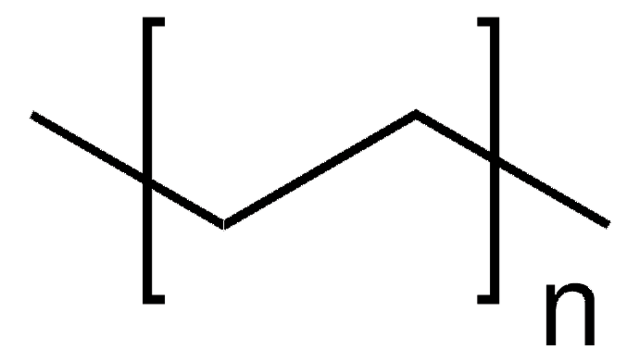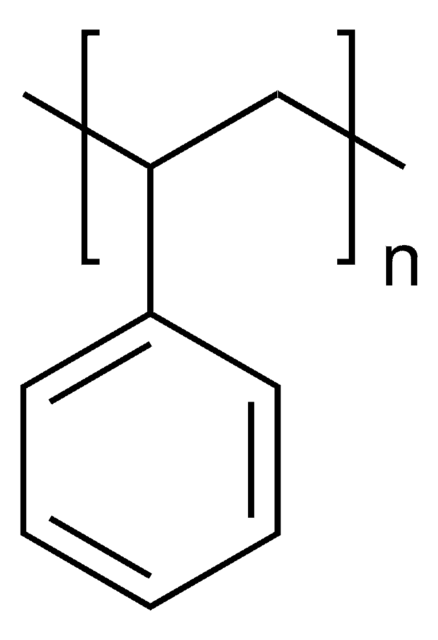427985
Polyethylene
High density, melt index 12 g/10 min (190 °C/2.16kg)
Sign Into View Organizational & Contract Pricing
All Photos(2)
About This Item
Linear Formula:
H(CH2CH2)nH
CAS Number:
MDL number:
UNSPSC Code:
12162002
PubChem Substance ID:
NACRES:
NA.23
Recommended Products
form
pellets
melt index
12 g/10 min (190 °C/2.16kg)
hardness
66 (Shore D, ASTM D 2240)
mp
125-140 °C
transition temp
softening point 125 °C (Vicat, ASTM D 1525)
density
0.952 g/mL at 25 °C
InChI
1S/C2H4/c1-2/h1-2H2
InChI key
VGGSQFUCUMXWEO-UHFFFAOYSA-N
Looking for similar products? Visit Product Comparison Guide
Related Categories
Application
Injection molded car seats, mower parts and pails.
Features and Benefits
Excellent stiffness and impact and warp resistance.
Storage Class Code
11 - Combustible Solids
WGK
WGK 3
Flash Point(F)
Not applicable
Flash Point(C)
Not applicable
Personal Protective Equipment
dust mask type N95 (US), Eyeshields, Gloves
Certificates of Analysis (COA)
Search for Certificates of Analysis (COA) by entering the products Lot/Batch Number. Lot and Batch Numbers can be found on a product’s label following the words ‘Lot’ or ‘Batch’.
Already Own This Product?
Find documentation for the products that you have recently purchased in the Document Library.
Customers Also Viewed
Eliandra Mirlei Rossi et al.
Journal of infection in developing countries, 7(3), 229-234 (2013-03-16)
Contaminated sponges might lead to cross-contamination in kitchens since they can transfer microorganisms to surfaces where microorganisms can survive for hours or days and contaminate food. The main objective of this study was to evaluate the transfer and the survival
Morteza Meftah et al.
The Journal of bone and joint surgery. American volume, 95(13), 1193-1197 (2013-07-05)
Ceramic femoral heads produce less wear of the opposing polyethylene than do metal femoral heads in wear simulation studies. This is a matched-pair analysis of the wear of ceramic and metal femoral heads on conventional polyethylene in uncemented total hip
Ingvild Bostadløkken et al.
Ugeskrift for laeger, 175(13), 891-892 (2013-04-16)
We present a case of a 66-year-old woman who had a total knee arthroplasty. Shortly after surgery a 90° rotation of her polyethylene liner took place. The complication was undiagnosed for 1.5 years. To know this problem and be able
Alicia E Leadford et al.
Pediatrics, 132(1), e128-e134 (2013-06-05)
Hypothermia contributes to neonatal mortality and morbidity, especially in preterm and low birth weight infants in developing countries. Plastic bags covering the trunk and extremities of very low birth weight infants reduces hypothermia. This technique has not been studied in
S Strieth
HNO, 61(3), 211-216 (2013-03-08)
Although porous polyethylene (PPE) implants are already used in reconstructive craniofacial surgery, they are still only applied in rhinoplasty when critically indicated. Biocompatibility of PPE implants (pore size ~100-200 µm) can be modified by tissue engineering: coatings with extracellular matrix
Our team of scientists has experience in all areas of research including Life Science, Material Science, Chemical Synthesis, Chromatography, Analytical and many others.
Contact Technical Service



